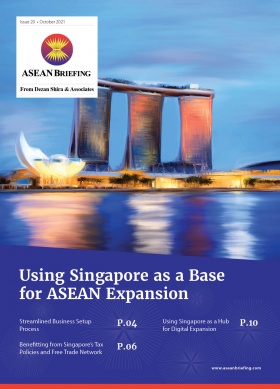Vietnam’s Intellectual Property Law: New Amendments
Vietnam has made amendments to its Intellectual Property Law, considered the most significant since its creation. The amendments introduce changes to areas such as industrial property, copyrights, and the enforcement of intellectual property.
The changes aim to put the law closer in line with international best practices.
Vietnam has updated its Intellectual Property Law, marking the most significant changes to the law since its creation. The amendments introduce changes to numerous areas, including copyrights, industrial property, and enforcement of intellectual property, while putting Vietnam closer in line with international best practices.
Vietnam’s National Assembly ratified the amendments to the Intellectual Property Law on June 16, 2022, through Law No.07/2022/QH15. The amendments, which change dozens of articles in the law, will take effect on January 1, 2023. The law first came into force in 2005 and was previously amended by Vietnamese lawmakers in 2009 and 2019.
The amendments to the law reflect Vietnam’s commitment to accede to several international agreements in recent years. Namely, the amendments address requirements stipulated by the Comprehensive and Progressive Agreement for Trans-Pacific Partnership (CPTPP), the Regional Comprehensive Economic Partnership (RCEP), and the European Union-Vietnam Free Trade Agreement (EVFTA).In this article, we highlight some of the key updates introduced by the amendments. Due to the extensiveness of the amendments, businesses with intellectual property considerations in Vietnam are advised to review how they may be affected.
Definitions
The amendments revise or add new definitions for several terms in Article 4. These are:
- Derivative work;
- Published work, phonogram, or video recording;
- Reproduction;
- Royalties;
- Technological measures to protect rights;
- Effective technological measures;
- Rights management information;
- Broadcast;
- Communication to the public;
- Confidential invention;
- Industrial design;
- Well-known mark;
- Geographical indication; and
- Homophonic geographic indication.
The new definitions bring Vietnam’s intellectual property terminology in line with international standards. They are broadly similar to the definitions used by many other countries party to international trade agreements, such as the US and UK.
Copyrights
The amended law introduces changes to numerous copyright and related rights provisions. These include amendments to the following areas:
- Article 12A – Co-authorship: Clarifies the criteria for what is considered co-authorship. Namely, co-authorship is when two or more people directly co-create the work with the intention that their contributions are combined and completed as a whole. People who give support to other people to create works are not co-authors.
- Article 19 – Moral rights: The author has the right to transfer the right to use the name of work to organizations or individuals that receive the transfer of property rights specified in Article 20, Clause 1. Authors can also use their real name or a pseudonym, publish the work or allow others to publish the work, and are protected against the integrity of the work being misrepresented by others.
- Article 20 – Property rights: The article specifies rights to making derivative works, performing the work directly or indirectly through phonograms, video recordings, or other means, copying directly or indirectly the whole or parts of the work, distributing or importing for distribution to the public ownership transfer through sale or other means, broadcasting or communicating the work to the public, and renting out the original or a copy of a cinematographic work or computer program.
- Article 21 – Copyright in cinematographic works and theatrical works: The amendment specifies the rights of various actors in connection with different components of cinematographic and theatrical works. These include those relating to screenwriters and directors, cinematographers, montages, music composers, art designers, sound, lighting, and visual effects designers, investors, and scripts and musical works.
- Article 22 – Computer programs: The amendment defines what is considered a computer program, and protects them as literary works, whether expressed in source or machine code. It also specifies that the author and copyright holder have the right to agree in writing on the repair and upgrade of the computer program.
In addition to these areas, the amendments revise numerous other clauses relating to copyrights. These affect, among others, copyright holders, performers, broadcast organizations, related rights holders, and more.
Industrial design
The amended law updates the process for industrial design registration applications, per Article 103. The new process requires the following:
- Documents identifying the industrial design to be protected must include a set of photos, drawings of the industrial design, and a description of the industrial design shown in the photos and drawings.
- The set of photos and drawings of the industrial design must fully show the design features of the industrial design claimed for protection to the extent that a person with average knowledge of the respective field can identify the industrial design.
- The industrial design description in the photos and drawings must list the order of the photos and drawings and the design features of the industrial design.
Enforcement of intellectual property rights
A key component of the amended law is to introduce new provisions regarding the enforcement of intellectual property rights and dispute resolution. These include:
- Article 198a – Assumptions about copyright and related rights: Describes assumptions regarding copyright and related rights in civil, administrative, and criminal court proceedings, if there is no evidence to the contrary.
- Article 198b – Liability for copyright and related rights for intermediary service providers: Defines an intermediary service provider, describes their responsibilities and lists the cases where they are exempt from legal liability for acts of infringement of copyright and related rights.
- Article 212 – Acts of infringing upon intellectual property rights shall be penalized: Individuals and commercial legal entities that commit acts of infringing upon intellectual property may be subject to criminal penalties.
- Article 213 – Intellectual property on counterfeit goods: Describes what is considered forged or pirated goods. The article states that geographical indications can be forged, in addition to trademarks, labels, etc.
The amendments also address customs measures, administrative penalties, and other measures relating to enforcement.
Beyond the updates described in this article, the amended law introduces many more changes to Vietnam’s Intellectual Property Law. Businesses would do well to undertake a comprehensive review of their intellectual property considerations in light of the scope of the amendments.
About Us
ASEAN Briefing is produced by Dezan Shira & Associates. The firm assists foreign investors throughout Asia and maintains offices throughout ASEAN, including in Singapore, Hanoi, Ho Chi Minh City, and Da Nang in Vietnam, Munich, and Essen in Germany, Boston, and Salt Lake City in the United States, Milan, Conegliano, and Udine in Italy, in addition to Jakarta, and Batam in Indonesia. We also have partner firms in Malaysia, Bangladesh, the Philippines, and Thailand as well as our practices in China and India. Please contact us at asia@dezshira.com or visit our website at www.dezshira.com.
- Previous Article The Philippines’ 2022 Strategic Investment Priority Plan
- Next Article How to Obtain Halal Certification in Indonesia








